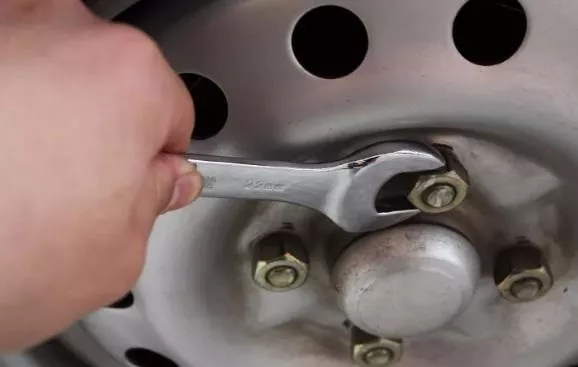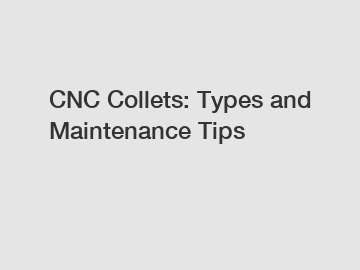Why Do Screws Have to Be Tightened Clockwise?
Plato's friend invented the screw
The six simplest mechanical tools are: screws, inclined planes, levers, pulleys, wedges, wheels, and axles. The screw is among the six simple machines, but to put it bluntly, it is nothing more than an axis and an inclined plane winding around it. Today, screws have developed standard sizes. The typical way to use a screw is to turn it clockwise to tighten it (as opposed to turning it counterclockwise to loosen it).
Clockwise tightening is mainly determined by right-handers
However, since the screws at the time of their invention were all made manually, the fineness of the screws was not consistent and was often determined by the craftsman's personal preference.

By the mid-16th century, French court engineer Jaques Besson invented a lathe that could cut screws. It later took 100 years for this technology to be promoted. The Englishman Henry Maudsley invented the modern lathe in 1797. With it, the fineness of threads was significantly improved. Despite this, there is still no unified standard for the size and fineness of screws.
This situation changed in 1841. Maudsley's apprentice Joseph Whitworth submitted an article to the Institution of Municipal Engineers calling for the unification of screw types. He made two suggestions:
1. The inclination angle of the screw thread should be 55° as the standard;
2. Regardless of the diameter of the screw, the number of wires per foot should adopt a certain standard.
Although screws are small, they require n types of machine tools and n+1 types of cutting tools to make them in the early days.
Early screws were not easy to make because their production process "required three cutting tools and two machine tools."
In order to solve the production and manufacturing problems of British standards, American William Sellers invented a flat-top and flat-heeled thread in 1864. This small change allowed screws to be manufactured with only one tool and machine tool. Faster, easier and cheaper.
The thread of Sellers screws became popular in the United States and soon became the standard for Amtrak applications.
Main variables of the tightening process:
(1) Torque (T): the applied tightening torque, unit Nm (Nm);
(2) Clamping force (F): the actual axial clamping (pressing) size between connecting bodies, unit Newton (N);
Hss Vs Solid Carbide End Mills, Lessons Learned, Questions.
How Does electric toothbrushes Work?
Revolutionizing Maintenance: Are Condenser Tube Brushes Necessary?
Battle of the Tool Holders: BT 40 vs Cat 40
Tube Cleaning Brushes – The Ultimate Guide To Choose ...
Wire End Brushes
Welding Wire Manufacturing - GMAW - GTAW
(3) Friction coefficient (U): the torque coefficient consumed by bolt heads, thread pairs, etc.;
(4) Rotation angle (A): Based on a certain torque, the bolt will have a certain axial elongation or the connector will be compressed and the thread angle needs to be turned.
Bolt tightening control method
1. Torque control method
Definition: When the tightening torque reaches a certain set control torque, the tightening control method is stopped immediately.
Advantages: The control system is simple and direct, and it is easy to use a torque sensor or a high-precision torque wrench to check the quality of tightening.
Disadvantages: The control accuracy is not high (preload error is about ±25%), and the potential of the material cannot be fully utilized.
2. Torque-rotation angle control method
Definition: A control method that first tightens the bolt to a small torque, and then starts from this point to tighten a specified rotation angle.
Advantages: The bolt axial preload force has high accuracy (±15%), a larger axial preload force can be obtained, and the values can be concentrated around the average value.
Disadvantages: The control system is complex and needs to measure two parameters: torque and rotation angle; and it is not easy for the quality inspection department to find an appropriate method to check the tightening results.
3. Yield point control method
Definition: A method of stopping tightening after tightening the bolt to the yield point.
Advantages: The tightening accuracy is very high, and the pretightening force error can be controlled within ±8%; but its accuracy mainly depends on the yield strength of the bolt itself.
Disadvantages: The tightening process requires dynamic and continuous calculation and judgment of the slope of the torque and angle curve, and the control system has high requirements for real-time performance and operation speed.
Advantages of Rapid Prototyping
What Is The Cheapest Grade Of Stainless Steel?
What are the three types of tool holders?
CNC Collet Sizes: Comprehensive Guide vs. Quick Comparison
How Does metal diamond polishing pads Work?
Sentinel NTE-5 Safety Valve
Top Flap Discs for Effortless Wood Sanding











